Solar Shingles Vs Solar Panels: What’s the Difference?
In the rapidly evolving landscape of renewable energy, the choice between solar shingles and traditional solar panels has become pivotal for those seeking to harness the sun’s power.
Understanding the fundamental differences between these two solar solutions is crucial for homeowners, businesses, and eco-conscious individuals alike.
In this exploration, we’ll discover the intricacies of solar shingles and solar panels, comparing their functionalities, aesthetics, and overall impact on energy efficiency.
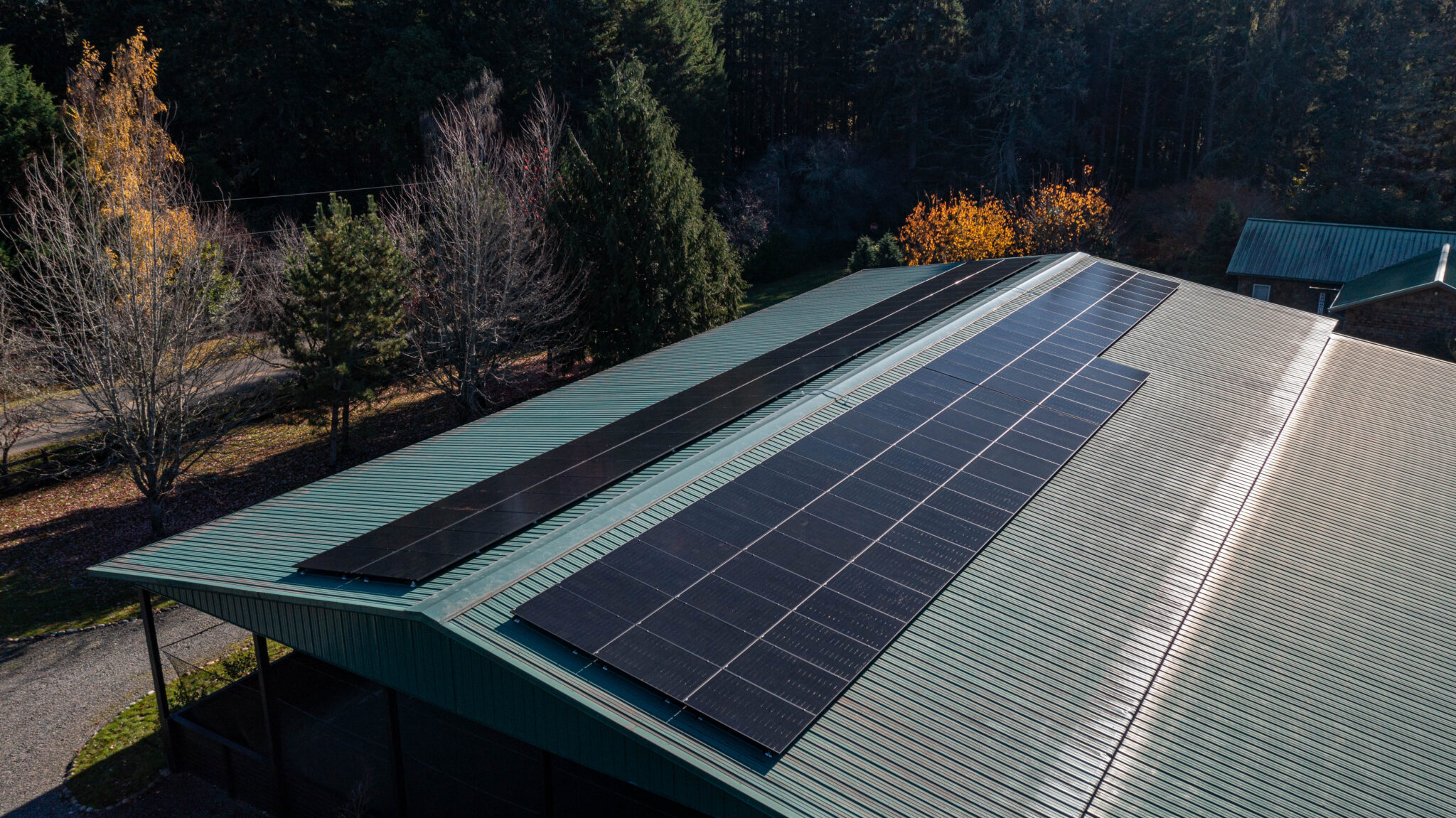
What Are Solar Panels?
Solar panels, also known as photovoltaic (PV) panels, convert sunlight into electricity. Composed of silicon cells, these panels harness the sun’s energy through the photovoltaic effect, generating a direct current (DC) converted into alternating current (AC) for use in homes and businesses.
Solar panels have become a mainstream renewable energy source, creating a cleaner and more sustainable power grid. They are typically mounted on rooftops or in open spaces to maximize exposure to sunlight, providing an eco-friendly alternative to traditional fossil fuels.
What Are Solar Shingles?
Solar shingles, a revolutionary advancement in solar technology, seamlessly blend functionality with aesthetics by integrating solar cells into roofing materials. These shingles, often designed to mimic traditional roofing materials like asphalt or slate, protect the structure from the elements while simultaneously harnessing solar energy.
This innovative approach to solar power eliminates the need for separate solar panels, offering an aesthetically pleasing solution for homeowners looking to embrace renewable energy without compromising the visual appeal of their homes. Solar shingles represent a stylish and efficient way to generate clean electricity while enhancing the overall architecture of a building.
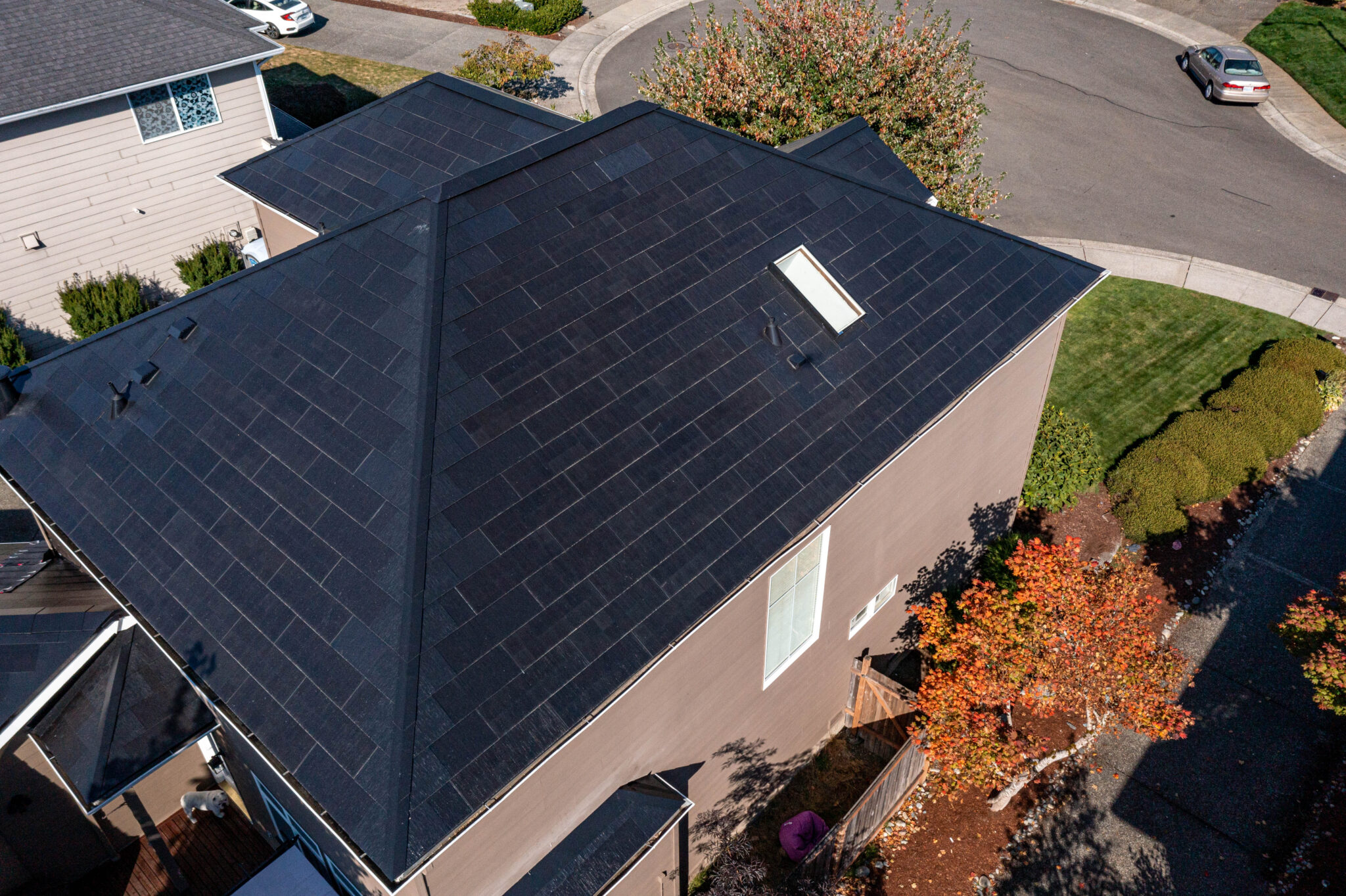
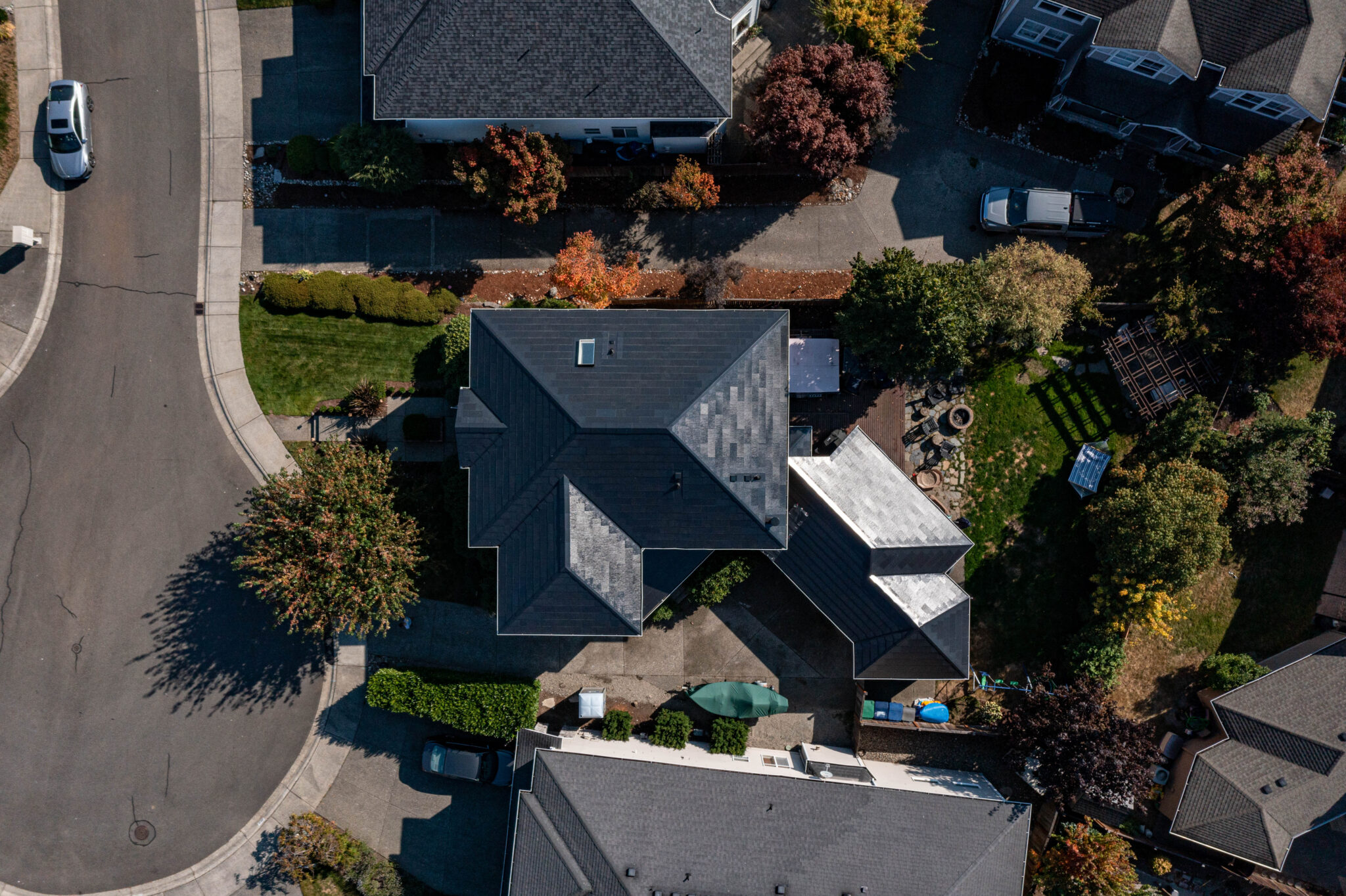
How Do Solar Shingles and Solar Panels Work?
Understanding the functionality of both solar shingles and solar panels is essential in making an informed decision about renewable energy solutions.
Solar panels, comprised of photovoltaic cells, convert sunlight into electricity through the photovoltaic effect. These panels, typically mounted on rooftops or open spaces, generate a direct current (DC) converted into usable alternating current (AC).
On the other hand, solar shingles integrate solar cells directly into roofing materials. As sunlight strikes these shingles, it activates the photovoltaic cells, producing electricity.
The seamless integration of solar technology into the building’s architecture is a key feature of solar shingles, making them an aesthetically appealing choice for those who prioritize both form and function in sustainable energy solutions.
How are Solar Panels and Solar Shingles Similar?
-
Photovoltaic Technology

Photovoltaic (PV) technology serves as the backbone for both solar panels and solar shingles. These systems rely on the photovoltaic effect, where sunlight is converted into electrical power through the interaction of photons with semiconductor materials. Whether it’s the silicon cells in traditional solar panels or the integrated solar cells in shingles, the underlying mechanism remains consistent. Exploring the intricacies of photovoltaic technology sheds light on these solar solutions’ efficiency, durability, and overall performance.
-
Incentives

Governments and organizations worldwide offer various incentives to promote the adoption of solar energy. Both solar panels and shingles often qualify for financial incentives, tax credits, and rebates designed to make renewable energy systems more accessible. Understanding the incentives available for each technology is crucial for individuals and businesses looking to maximize their return on investment while contributing to a sustainable future.
-
Net Metering Policies

Net metering policies are pivotal in integrating solar energy systems into the grid. Whether utilizing solar panels or shingles, the excess energy generated can be fed back into the grid, earning credits or reducing electricity bills. Examining the net metering policies associated with each technology provides insight into the economic benefits and grid impact, helping consumers make informed decisions based on their specific energy needs and local regulations.
-
How are Solar Shingles and Solar Panels Different?

As the demand for solar solutions continues to grow, understanding the distinctions between solar shingles and solar panels becomes crucial for those seeking the most suitable renewable energy option. Each technology has its own characteristics that influence cost, efficiency, flexibility, dimensions, aesthetics, longevity, and warranty. Delving into these differences provides a comprehensive perspective on how these solar systems diverge, aiding individuals and businesses in making informed decisions that align with their energy goals and preferences.
-
Cost

One of the primary considerations when evaluating solar solutions is the cost. Solar panels are generally considered cost-effective with a well-established manufacturing process and economies of scale. On the other hand, solar shingles, incorporating advanced technology into roofing materials, can be more expensive in materials and installation. Exploring the cost differences between solar shingles and solar panels is essential for budget-conscious consumers looking to make a sustainable investment.
-
Efficiency

Efficiency is a critical factor in determining the performance of solar systems. Solar panels, with their large surface area and optimized design, often boast higher efficiency than solar shingles. The efficiency of each technology influences the amount of electricity generated per square foot, impacting the overall effectiveness of the solar installation. Analyzing the efficiency of solar shingles and solar panels provides valuable insights into the energy output and the long-term returns on investment.
-
Flexibility

The flexibility of solar installations can be a deciding factor for those with specific architectural or space constraints. Solar panels, mounted on racks or frames, offer more flexibility in placement and orientation. Solar shingles, integrated directly into the roof, may have limitations in adjusting to optimal angles for sunlight exposure. Assessing the flexibility of each technology is crucial for tailoring solar solutions to the unique requirements of different environments and structures.
-
Dimensions

The physical dimensions of solar shingles and solar panels play a role in their integration into various structures. Available in standardized sizes, solar panels can be easily adapted to different roof configurations. Solar shingles, however, may have specific dimensions based on the design and roofing material, potentially affecting the overall coverage and power output. Understanding the dimensions of each technology is essential for optimizing the use of available space and achieving maximum energy generation.
-
Aesthetics

Aesthetics are increasingly important for those who wish to embrace renewable energy without compromising the visual appeal of their homes or buildings. Solar panels are visible additions to rooftops, while solar shingles are designed to seamlessly blend with traditional roofing materials. Exploring the aesthetic differences between solar shingles and solar panels provides insight into how each technology contributes to a property’s overall look and feel.
-
Longevity

The lifespan of solar installations is a critical factor in evaluating their overall value. Solar panels, with a proven track record, often have a longer lifespan compared to solar shingles. The durability of materials and the resilience of the technology to weather conditions are essential considerations. Assessing the longevity of solar shingles and solar panels aids in making decisions that align with long-term sustainability goals.
-
Warranty

Warranty terms are crucial to any significant investment, and solar installations are no exception. Solar panels typically come with well-established warranties, reflecting manufacturers’ confidence in their products. Solar shingles, being a newer technology, may have varying warranty terms. Examining the warranty details for both solar shingles and solar panels is essential for understanding the level of protection and support provided by manufacturers, ensuring peace of mind for consumers.
Solar Panels vs. Solar Shingles: Which Is Best for You?
Choosing between solar panels and solar shingles is a pivotal decision that hinges on various factors, from your budget and energy needs to aesthetic preferences and long-term goals.
In this comparison, we explore the pros and cons of both technologies to help you make an informed choice tailored to your unique circumstances.
Understanding the advantages and limitations of solar panels and solar shingles ensures that your investment aligns seamlessly with your vision for sustainable energy.
Solar Shingles
Pros:
Aesthetics: Solar shingles seamlessly integrate with roofing materials, offering an aesthetically pleasing solution that preserves the architectural integrity of your home.
Space Efficiency: As they replace traditional roofing materials, solar shingles optimize space and do not require additional land or structures.
Blending with the Environment: The discreet design of solar shingles makes them a preferred choice for those seeking an environmentally conscious solution that harmonizes with the surroundings.
Cons:
Cost: Solar shingles are often more expensive than traditional solar panels, making the initial investment higher.
Installation Complexity: The integration of solar shingles into the roof requires specialized installation, potentially increasing labor costs and time.
Efficiency: Solar shingles may have slightly lower efficiency compared to solar panels, impacting the overall energy output.
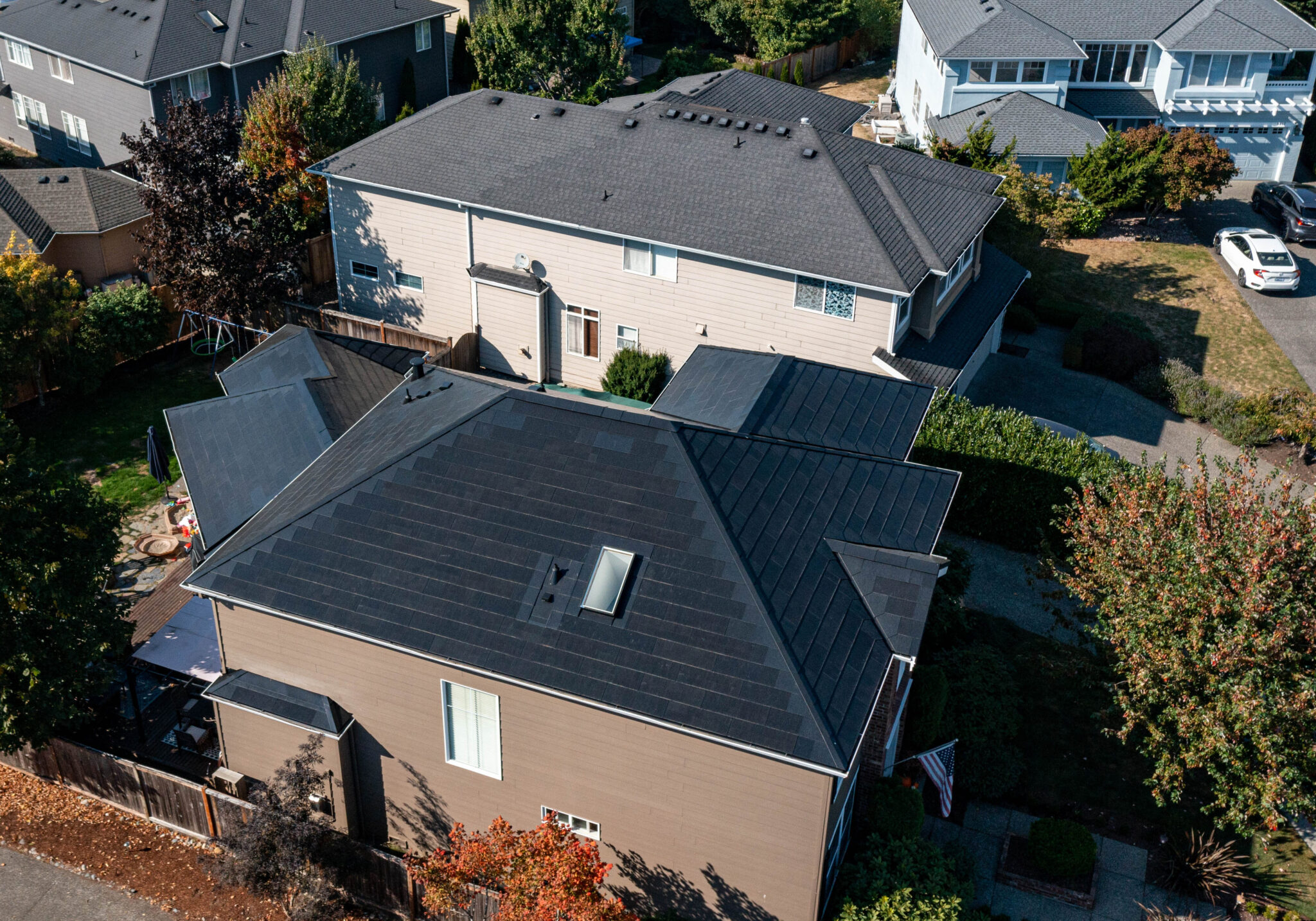
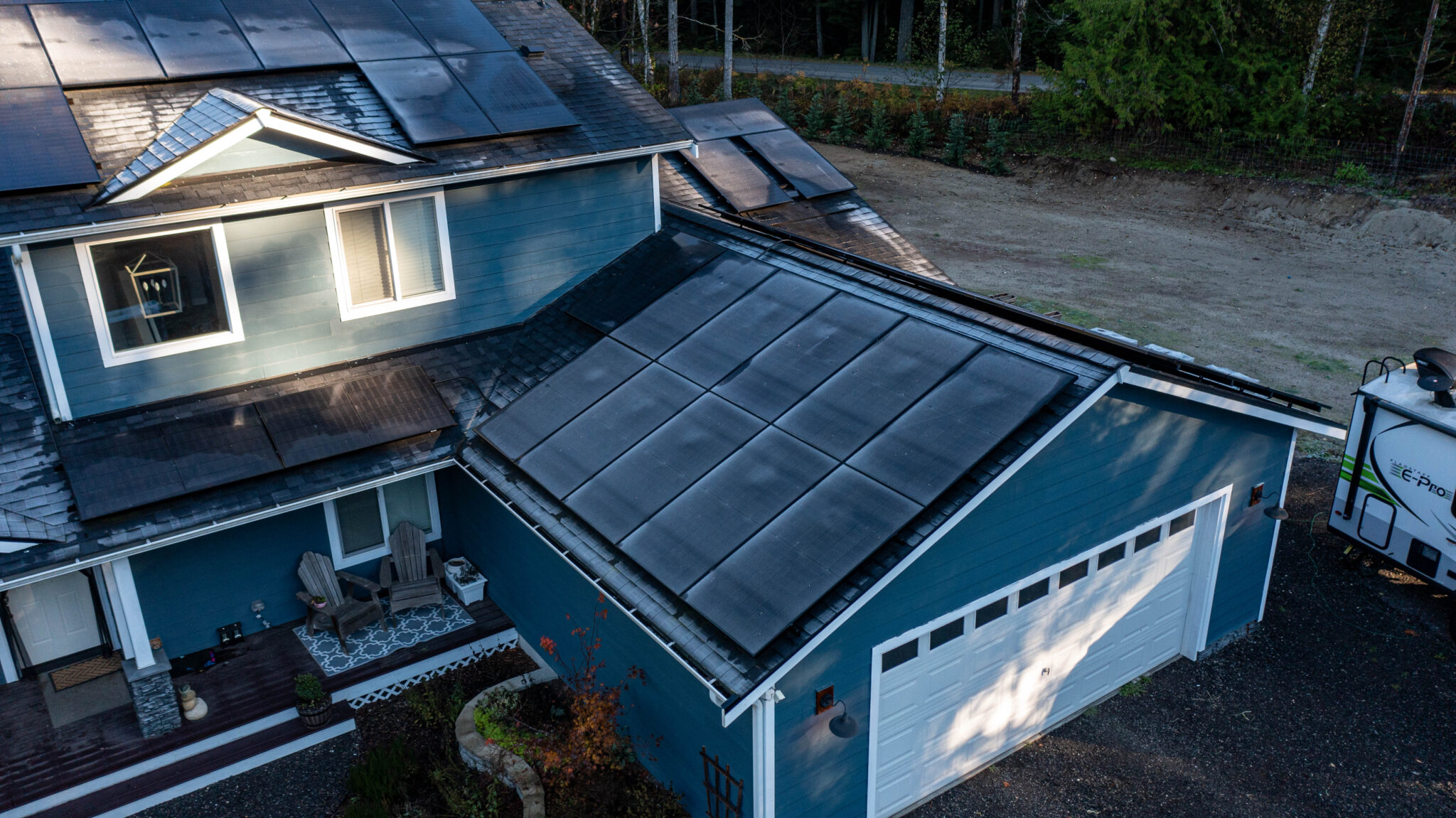
Solar Panels
Pros:
Cost-Effectiveness: Solar panels generally have a lower upfront cost, providing a cost-effective option for those prioritizing budget considerations.
High Efficiency: With larger surface areas and optimized designs, solar panels often exhibit higher efficiency, generating more electricity for a given space.
Proven Technology: Solar panels have a well-established track record, with proven durability and reliability in various environmental conditions.
Cons:
Aesthetic Impact: The visible presence of solar panels on rooftops may affect the overall aesthetics of a building, especially for those seeking a seamless integration with existing architecture.
Space Requirements: Solar panels require additional space, either on the roof or on the ground, which may be a limitation for properties with limited available space.
Installation Considerations: Mounting solar panels may involve frames or racks, adding to the installation’s complexity and potentially affecting the visual appeal.
When to Use Solar Shingles vs. Solar Panels
-
Aesthetic Considerations

Solar Shingles: Opt for solar shingles if maintaining the aesthetic appeal of your property is a top priority. These seamlessly integrate with traditional roofing materials, providing a visually pleasing and unobtrusive solar solution.
Solar Panels: Choose solar panels if the visual impact on your property is less of a concern. While panels are highly efficient, they are more noticeable on rooftops and may not blend seamlessly with certain architectural styles.
-
Budget Constraints

Solar Shingles: If budget constraints are flexible, and you value the aesthetic integration of solar technology into your home, solar shingles may be the preferred choice despite their higher initial cost.
Solar Panels: Opt for solar panels if you prioritize cost-effectiveness. Traditional solar panels generally have a lower upfront cost, making them a more economical choice for those on a tight budget.
-
Space Availability

Solar Shingles: Choose solar shingles if space is limited, as they replace traditional roofing materials and do not require additional land or structures. This is particularly beneficial for urban environments or homes with small rooftops.
Solar Panels: Opt for solar panels if you have ample space on your property, either on the roof or on the ground. Panels require additional space for installation, making them suitable for properties with larger available areas.
-
Energy Efficiency Prioritization

Solar Shingles: If slightly lower efficiency is acceptable and you prioritize the seamless integration of solar technology into your home, solar shingles may be the ideal choice.
Solar Panels: Choose solar panels if maximizing energy efficiency is a top priority. The larger surface area and optimized design of panels often result in higher efficiency and greater electricity generation.
-
Long-Term Investment

Solar Shingles: Opt for solar shingles if you view solar technology as a long-term investment and are willing to pay a premium for the aesthetic and integrated benefits they offer.
Solar Panels: Choose solar panels if maximizing the return on investment over the long term is a primary consideration. Solar panels, with their proven track record and cost-effectiveness, are a reliable choice for those focused on long-term sustainability.
FAQs About the Difference Between Solar Shingles and Solar Panels
Do solar panels and shingles work on cloudy days?
Both solar panels and shingles can generate electricity on cloudy days, although their efficiency is reduced compared to sunny conditions. While they rely on sunlight, they can still produce significant power, even in overcast weather.
What happens if there is snow on my solar roof?
Snow accumulation can temporarily impact the performance of both solar panels and shingles. However, these systems are designed to be resilient. Snow generally slides off angled surfaces; many solar installations are designed with this in mind. Additionally, sunlight can still penetrate light layers of snow, allowing the systems to function.
Can I DIY install solar panels or solar shingles?
While some may attempt DIY solar installations, hiring professionals for solar panels and shingles is generally recommended. Proper installation is crucial for optimal performance and safety. DIY installation can void warranties and may not comply with local regulations.
Where can you buy solar shingles?
Solar shingles are available through various channels, including specialized solar retailers, roofing companies, and home improvement stores. Choosing reputable suppliers and consulting with professionals is important to ensure proper installation.
Where can you buy solar panels?
Solar panels are widely available and can be purchased from solar equipment suppliers, home improvement stores, and professional installation companies. Reputable suppliers and certified installers can guide you in selecting the right panels for your needs.
Are solar panels better than solar shingles?
The choice between solar panels and shingles depends on individual priorities. Solar panels are generally more cost-effective and efficient, making them a practical choice for many. However, if aesthetics and integrated design are top priorities, solar shingles may be preferred. Evaluating your specific needs and preferences will determine which technology is better suited for you.
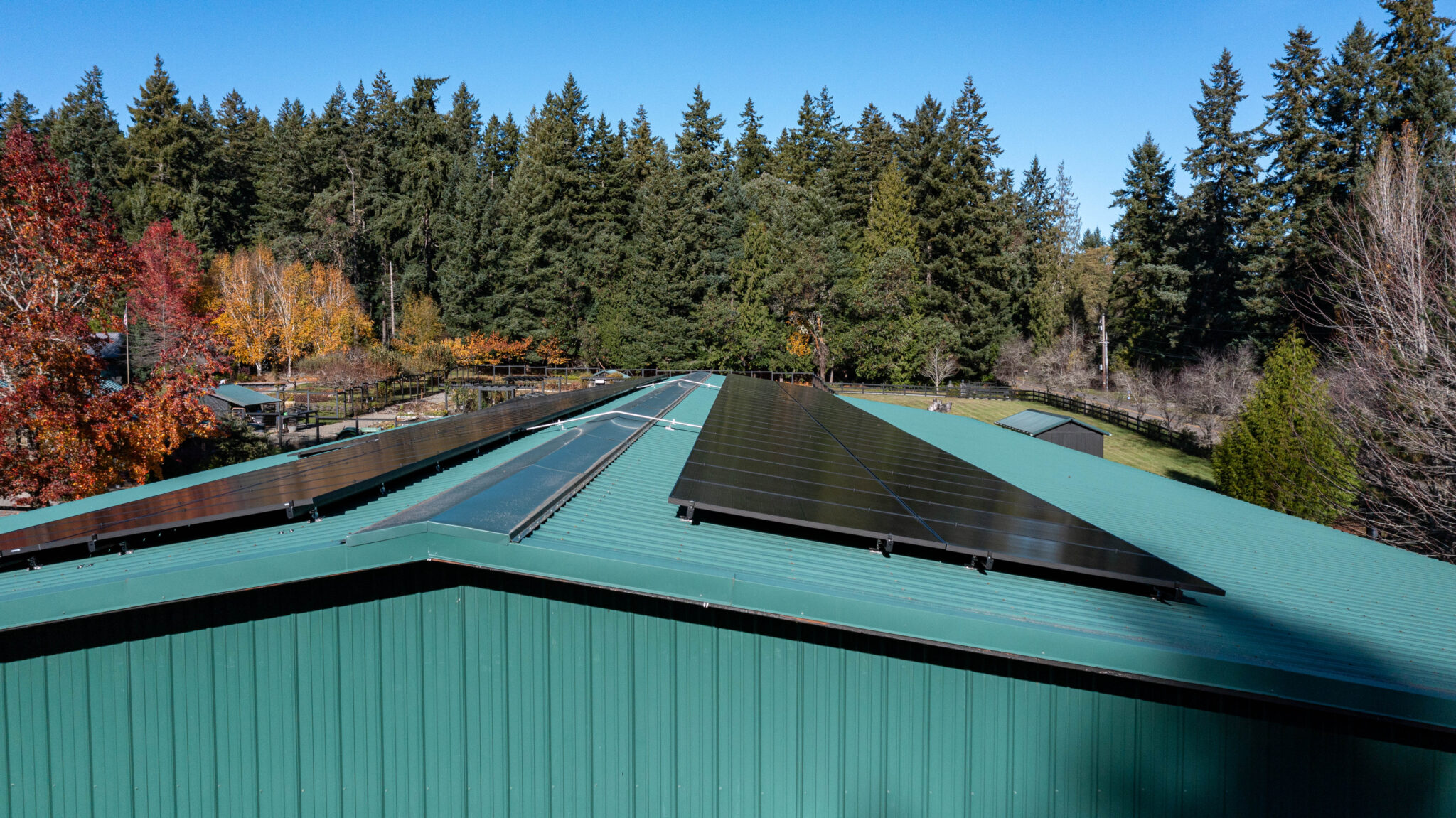
Making an Informed Choice for a Sustainable Future
As technology continues to evolve, so do the options available for clean energy solutions. Whether you prioritize the seamless integration of solar shingles or the cost-effectiveness of traditional solar panels, understanding the differences empowers you to contribute to a greener tomorrow.
At Northwest Electric and Solar, we are committed to being your partner in the journey towards clean energy. As a full-service Washington State commercial and residential electrical contracting company, we specialize in solar photovoltaic (PV), energy storage, electric vehicle charging, and energy efficiency.
Our mission is to make a positive impact one installation at a time, working closely with homeowners, commercial businesses, and communities to bring the benefits of clean energy to every corner of Washington State.
Ready to take the next step in your clean energy journey? Contact us today, and let’s work together to create a sustainable future for future generations.


